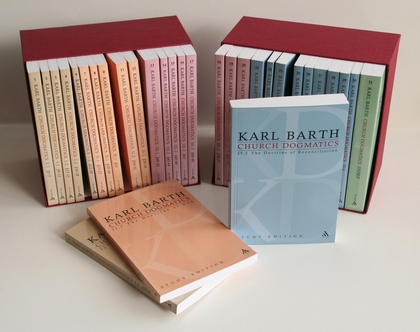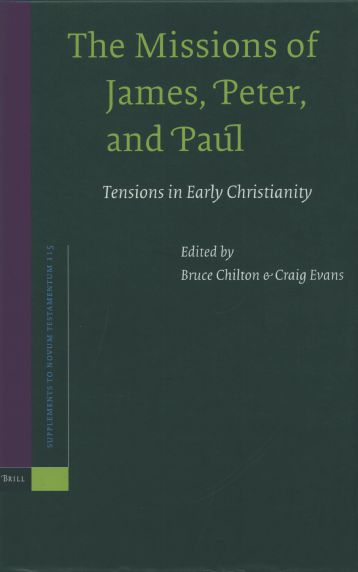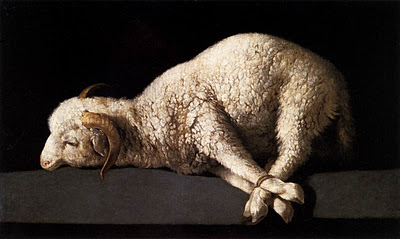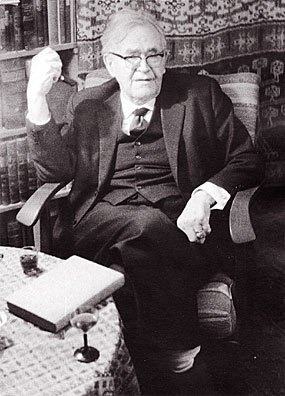 Selection: The Church Dogmatics II/2:44-51, The Foundation of the Doctrine.
Selection: The Church Dogmatics II/2:44-51, The Foundation of the Doctrine.
Barth names the fourth inadequate foundation for the doctrine of election as a doctrine which begins with a view of God in terms of omnipotent will. God is wrongly conceived if viewed as absolute power, and God’s election is also wrongly conceived if viewed as a sub-set of a thorough-going determinism in which God is viewed as the almighty causative agent of every happening. Certainly, for Barth, God is almighty but God’s divinity is not considered in abstraction from election. Indeed, his election is the context within which we conceive of his divinity and providence. The god of absolute power is not the God of Scripture (44-45).
Barth identifies the tendency to subordinate election as one moment in an overarching providence in Thomas Aquinas, Bonaventura, and Zwingli. It is to Calvin’s credit that he broke with this tradition, treating providence together with creation, and predestination as the climax of the grace of God revealed and active in Jesus Christ. However, “that predestination should not only be subordinate to providence but superior to it was apparently not what Calvin intended” (46). Thus, Calvin’s followers again returned to the former tradition in which the ruling concept of the doctrine of election became once more, that of an “absolutely free divine disposing” (46). Barth cites extensively from the recently published volume by Boettner to show the contemporary continuation of this approach, which he attributes to Gomarus rather than Calvin (47).
Barth rejects this approach: “latet periculum in generalibus” (‘danger lurks in generalities!’; 48).
Once again we must say that use has been made here of a presupposition which is not so self-evident as it makes itself out to be. Recourse has been had here to an apparent movement in formal logic from the general to the particular, without any demonstration whether or not such a procedure corresponds to the specific logic of this subject. … If [the doctrine of election] is grounded upon the logical necessity of the free and omnipotent divine will active both in general matters and in particular, both in the world as a whole and also in relation to the salvation and damnation of man, this means that it is…abstractly grounded so far as concerns the electing God (48).
For Barth, the electing God must be properly identified, not abstracted from a general theory of deity. God is sovereign and does indeed rule, but as the one God has self-determined himself to be, in the concrete limitation of his being as given in this election, the particular God known in his self-revelation. Thus,
The true God is the One whose freedom and love have nothing to do with abstract absoluteness or naked sovereignty, but who in His love and freedom has determined and limited Himself to be God in particular and not in general, and only as such to be omnipotent and sovereign and the possessor of all other perfections (49).
If God is viewed abstractly in terms of absolute power and omnipotent will, not only is he viewed in a manner distinct from his self-revelation and the testimony of Scripture (49), it is difficult to escape the danger of portraying God as a tyrant, and of understanding his rule as that of absolute caprice (50-51).
Infinite power in an infinite sphere is rather the characteristic of the government of ungodly and anti-godly courts. God Himself rules in a definite sphere and with a definite power. What makes Him the divine Ruler is the very fact that His rule is determined and limited: self-determined and self-limited, but determined and limited none the less; and not in the sense that His caprice as such constitutes His divine being and therefore the principle of His world-government, but in such a way that He has concretely determined and limited Himself after the manner of a true king (and not of a tyrant); in such a way, then, that we can never expect any decisions from God except those which rest upon this concrete determination and limitation of His being, upon this primal decision made in His eternal being; decisions, then, which are always in direct line with this primal decision, and not somewhere to right or lift of it in an infinite sphere (50).
It is impossible to read these comments written in the early 1940s without hearing veiled references to the absolutist tyranny of Hitler’s Third Reich. Although God is indeed Almighty, his rule is not to be confused with the absolutist pretensions that marked Hitler’s rule. In the decision of election God has determined his being to be God only in a particular way.



